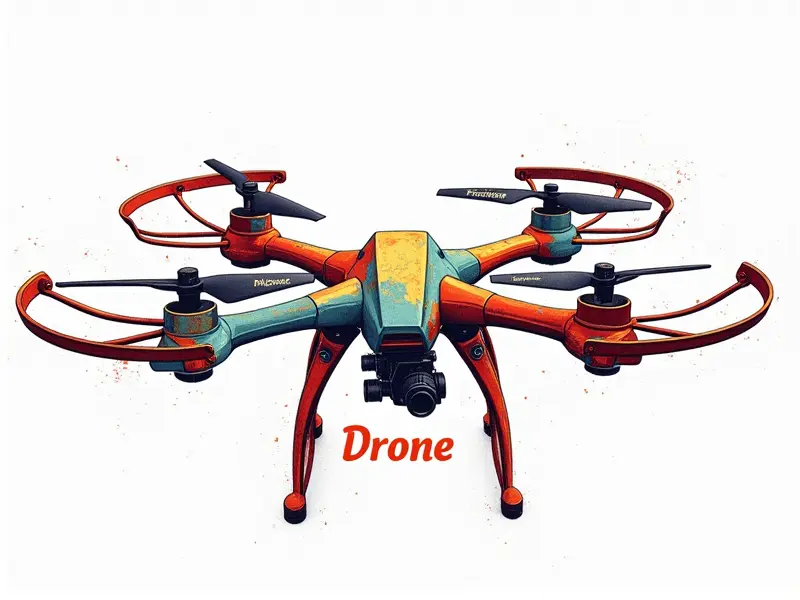What's needed to make a drone?

Building your own drone can be an incredibly rewarding experience. Whether you're a hobbyist looking to dive into the world of unmanned aerial vehicles (UAVs) or an engineer seeking to customize and optimize existing designs, understanding what components are necessary is crucial. This guide provides a comprehensive overview of everything needed for constructing your first drone.
Essential Components for Drone Building
The foundation of any drone lies in its core components:
- Frames: Lightweight and durable materials such as carbon fiber or plastic are ideal. The frame should be strong enough to support the weight of motors, propellers, batteries, and electronics.
- Motors: Brushless DC (BLDC) motors provide high efficiency and performance. Choose motors with a Kv rating that matches your desired flight characteristics.
- Propellers: Typically made from plastic or carbon fiber, propellers come in various sizes to suit different power outputs and frame designs.
- Batteries: Lithium-Polymer (LiPo) batteries offer high energy density. Ensure you have enough capacity for your desired flight time.
- Flight Controller: This is the brain of the drone, responsible for stabilizing and controlling its movements using sensors like accelerometers and gyroscopes.
DIY Drone Kit Checklist
If you're starting from scratch, a DIY kit can simplify the process. Here’s what to look for:
- Frame Kit: Includes all necessary frame pieces and hardware.
- Motor Set: Typically includes 4 or more motors depending on your quadcopter design.
- Propeller Pack: Comes with a variety of sizes to experiment with different flight characteristics.
- Battery Charger and Balancer: Essential for maintaining and charging LiPo batteries safely.
- Flight Controller Board: Pre-programmed or ready-to-install depending on your skill level.
Parts Needed for Your First Drone
To ensure a smooth build process, gather these key parts:
- Multimeter: For testing electrical connections and troubleshooting.
- Soldering Iron: Necessary for connecting wires to motors and flight controller.
- Cutters and Crimpers: Tools for trimming wires and securing connectors.
- Battery Connectors: Used to connect the battery to the ESCs (Electronic Speed Controllers).
- ESC Set: Controls motor speed based on input from the flight controller.
Beginner's Guide to Drone Assembly
Assembling your drone involves several steps:
- Frame Construction: Assemble the frame according to the manufacturer’s instructions. Ensure all screws are tight and secure.
- Motor Installation: Attach motors to the arms of the frame using appropriate mounting hardware.
- ESC Connection: Connect ESCs to the flight controller and power distribution board (PDB).
- Battery Wiring: Connect battery leads to the PDB or directly to the ESCs if no PDB is used.
Must-Have Tools for Drone Construction
The right tools make assembly easier and more efficient:
- Screwdrivers: Phillips and flathead screwdrivers are essential for assembling frames and mounting components.
- Tape Measure: Helps in measuring distances accurately during setup.
- Voltmeter: Useful for checking battery voltage before flight.
Step-by-Step Drone Build Essentials
Follow these steps to ensure a successful build:
- Component Selection: Choose components that match your performance and budget requirements.
- Preliminary Testing: Test individual components like motors, ESCs, and flight controller separately before assembly.
- Assembly Sequence: Follow a logical sequence to avoid complications during the build process.
Top 10 Items for Drone Assembly
The following items are critical for building your drone:
- Frame Kit:
- Motor Set:
- Propeller Pack:
- Battery Charger and Balancer:
- Flight Controller Board:
- Soldering Iron:
- Cutters and Crimpers:
- Battery Connectors:
- ESC Set:
- PDB (Power Distribution Board):
Components for a Custom Drone Setup
If you're aiming for customization, consider these components:
- Cameras and Cameras Mounts: For capturing aerial footage.
- Lights: Useful for night flights or photography.
- Sensors: Additional sensors like GPS can enhance flight stability and navigation capabilities.
Basic Hardware for Drones Explained
Understanding the basic hardware is key to successful drone building:
- FCC (Flight Control Computer):
- PDB (Power Distribution Board):
- Battery Management System (BMS):
Start-Up Checklist for Drones
Before your first flight, ensure you have:
- Fully Charged Batteries: Check battery voltage and charge status.
- Properly Installed Motors: Ensure all motors are securely mounted and aligned.
- Flight Controller Calibration: Calibrate sensors for accurate flight performance.
Core Requirements for Assembling Drones
The following requirements are fundamental to building a functional drone:
- Frame:
- Motors and Propellers:
- Battery Pack:
- Flight Controller:
Conclusion
Building a drone can be an exciting and rewarding experience. By following the steps outlined above, you'll be well on your way to creating a custom-built flying machine that suits your needs and preferences.

